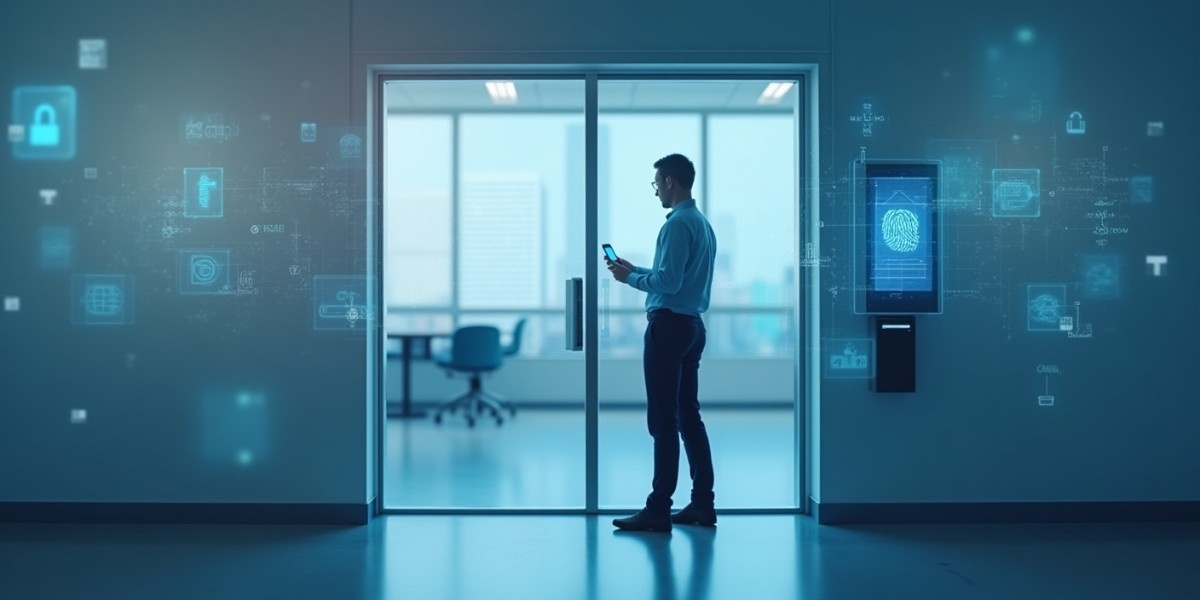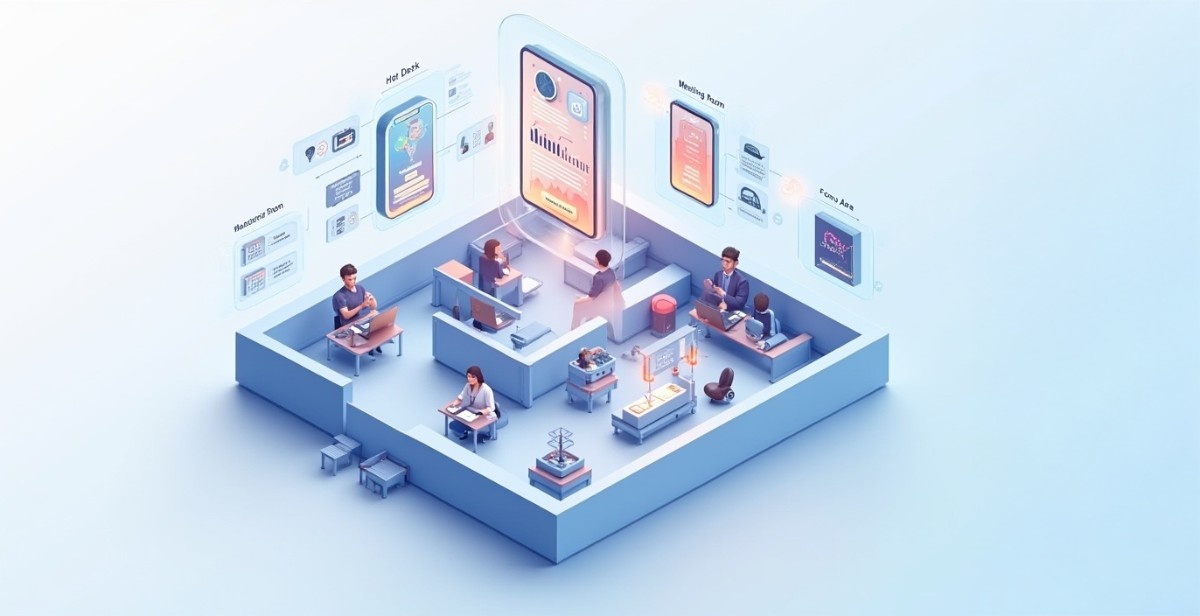“I’m a great believer that any tool that enhances communication has profound effects in terms of how people can learn from each other.”- Bill Gates
The workplace as we know is undergoing a major transformation. The days of arriving at work with a leather briefcase and spending the day caged up in a cubicle are long gone. Smart platforms for routine office processes are now available in today’s workplace. These developments have also allowed a shift in human resource management.
To begin with, traditional enclosed workspaces have made way for open workspaces. Hot desking booking system is a popular term you’ll hear these days. This results in a more flexible approach towards sharing available floor space. So, why isn’t it becoming more trendy to have designated workstations? Here’s all you should know about hot desking booking solution.
Hot-desking: The latest phenomenon
Multiple workers use a single workstation at different times, which is referred to as hot desking. A workstation might be a desk, a cubicle, or any other type of work surface. Hot desking allows a small office to handle a considerably bigger staff without requiring permanent occupancy. Contract workers, support personnel, and anyone else who isn’t obliged to work in a particular location can all be housed in the system.
Hot desking, as opposed to designating a desk for each employee, saves money on office space. The method has shown immense results by being extremely beneficial in the post covid world. While cost is the driving force behind the method, hot-desking also boosts productivity, especially in shift-based environments.
When did hot-desking come into existence?
Hot desking is an adaptation of a naval practice known as hot racking, and it is not a novel notion. The practice began in the sixteenth century as a means of maximizing the use of bunks on ships. Because they work in rotational shifts, low-ranking crew members are compelled to share bunks/beds.
The system was also known as “hot bunking” or “hot bedding.” In this context, the term “hot” refers to the fact that the departing member leaves the bed heated for the next occupant. Submarine personnel nowadays use hot racking to optimize space in order to maximize efficiency. Hot desking became popular in the workplace in the 1990s.
Entrepreneurial hotbeds like London, Boston, and Shanghai gave birth to it. The practice was prevalent among large firms at the time, as employees performed round-the-clock shifts. In offices where individual workstations are superfluous or impossible to prevent, hot-desking has become commonplace.
What makes hot-desking popular?
It’s important to assess the advantages of hot desking – for both the employer and the employees – just like any other business decision.
- Enhanced communication and socializing
Face-to-face encounters may become less common as remote technology become more common. Despite the notion that effective professional collaboration requires person-to-person contact, this is the case. A hot desk becomes a meeting place for coworkers to interact and get to know one another.
New relationships and connections are developed as social culture improves. The technology also allows knowledge to flow across teams and departments. Hot desking booking software can help speed up decision-making, communication and promote transparency by removing physical barriers.
- Cost-Effective
Hot desking has been shown to reduce the cost of running an office by up to 30%, according to top researchers. Changing from cellular offices to an open plan architecture minimizes the amount of space required as well. The requirement for additional workers, such as messengers and secretaries, can be reduced by downsizing on space.
- Ideal for the 21st-century workplace
The workplace, like the rest of the world, is rapidly changing. Cloud and remote task management applications have become the standard rather than the exception as technology has progressed. A workplace reservation system is a natural fit for this new reality. In a flexible workplace, freelancing, consulting, subcontracting, and other forms of remote employment become more accessible.
- Equality and autonomy
When you walk into a traditional office, you can immediately tell who is in charge. It’s not that having the coveted corner office is bad; it’s just that today’s workforce responds better to a neutral, “boss-free” workplace. Hot desks, in this sense, provide your organization a true “open door policy” environment.
Non-permanent job environments also provide for some autonomy. You have the ability to vary your work environment on a daily basis because you are not tied to a specific desk; for example, you can sit by the window today and by the entrance tomorrow.
- Safer workplaces
Effective hot desking booking software ensures social distancing as well as other workplace safety precautions through the hot desk booking app. When unique desks are removed, uniformity might take control.
How could you manage hot desking?
It’s time to set up hot desks after you’ve done your homework on each of the criteria above. The following are the key steps to engage in:
Step 1: Educate your employees on the Hot Desking Policy
Hot desking will have a significant impact on your employees’ life in a variety of ways. It’s critical to let them know what’s coming by discussing your policies ahead of time. This can be done in a short document that describes the advantages, anticipated changes, affected individuals or departments, and expected tasks.
Also, inform your employees about the structure and software that the company would deploy in order to guarantee that the new working arrangement takes their demands into account. This can involve providing adequate sanitized workstations for everyone, secure storage for personal belongings, appropriate tools and resources, and conference room access, among other things.
Step 2: Conduct a test and gather feedback.
Once everything is in place, consider running the application. This will help you discover and resolve any problems.
While you’re doing it, try to get as much feedback from the personnel as to possible by encouraging them to share their ideas, concerns, and questions. Take their suggestions into account when they give them.
This will not only assist you in improving your program but will also encourage your employees to participate, increasing your chances of success. Also, conducting pilot training with the department(s) that would require hot-desking the most is a terrific idea.
Step 3: Establish Etiquette for Hot Desking
There are etiquette norms in the workplace, published or unwritten, that help you operate in harmony and sustain workplace cohesion. Returning to hot desking, you’ll want to emphasize this because many employees won’t be able to exercise responsibility in an environment that isn’t permanent.
Hygiene, respect for other office users, and a smooth transition from one user to another should all be part of the etiquette guidelines. As a result, make sure you have the necessary supplies on hand, such as hand sanitizers, wipes, lockers, and so on. While each organization may have its own set of standards, the following are some general politeness guidelines:
- When your shift is over, leave your station as soon as possible.
- Maintain a clean and orderly station at all times.
- Personal goods should not be left on or in the desk; instead, they should be kept in the specified areas.
- Remove any personal or confidential files from the computer and log off at the end of your shift.
- Keep your voice professional and your chats to a minimum, especially if you’re in the workplace with other people.
- If you bring food, consume it where it belongs and don’t leave any leftovers.
Step 4: Invest in the right technology
Hot desking, if not properly handled, maybe disruptive, time-consuming, and a complete nightmare. Consider staff searching for unoccupied desks, looking for a conference room in a rented space, or vying for a workstation near the window. With the correct instruments, though, this can be prevented.
Invest in technologies that can help you manage work more efficiently, in addition to providing your personnel with the appropriate technology. Desk booking/scheduling, meeting scheduling, and online collaborative tools are just a few examples.
Where Does Hot Desking Fit In?
Veris hot desk booking app has arrived, and it appears to be making significant progress for many clients across numerous locations. Companies can now shift their focus away from growing office space and toward other aspects of expansion. Adopting hot-desking, like any new concept, may appear elusive at first. Fortunately, with the appropriate management, you’ll also be able to reap the rewards almost immediately.






































.avif)
.avif)





